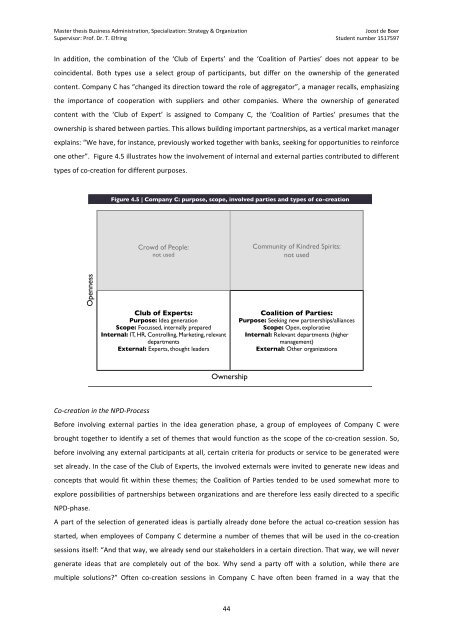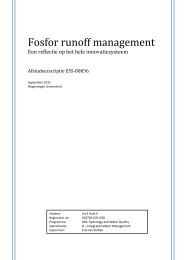Download PDF (English) - Future Ideas
Download PDF (English) - Future Ideas
Download PDF (English) - Future Ideas
Create successful ePaper yourself
Turn your PDF publications into a flip-book with our unique Google optimized e-Paper software.
Master thesis Business Administration, Specialization: Strategy & Organization <br />
Supervisor: Prof. Dr. T. Elfring <br />
Joost de Boer <br />
Student number 1517597 <br />
In addition, the combination of the ‘Club of Experts’ and the ‘Coalition of Parties’ does not appear to be <br />
coincidental. Both types use a select group of participants, but differ on the ownership of the generated <br />
content. Company C has “changed its direction toward the role of aggregator”, a manager recalls, emphasizing <br />
the importance of cooperation with suppliers and other companies. Where the ownership of generated <br />
content with the ‘Club of Expert’ is assigned to Company C, the ‘Coalition of Parties’ presumes that the <br />
ownership is shared between parties. This allows building important partnerships, as a vertical market manager <br />
explains: “We have, for instance, previously worked together with banks, seeking for opportunities to reinforce <br />
one other”. Figure 4.5 illustrates how the involvement of internal and external parties contributed to different <br />
types of co-‐creation for different purposes. <br />
Figure 4.5 | Company C: purpose, scope, involved parties and types of co-creation<br />
Crowd of People:<br />
not used<br />
Community of Kindred Spirits:<br />
not used<br />
Openness<br />
Club of Experts:<br />
Purpose: Idea generation<br />
Scope: Focussed, internally prepared<br />
Internal: IT, HR, Controlling, Marketing, relevant<br />
departments<br />
External: Experts, thought leaders<br />
Coalition of Parties:<br />
Purpose: Seeking new partnerships/alliances<br />
Scope: Open, explorative<br />
Internal: Relevant departments (higher<br />
management)<br />
External: Other organizations<br />
Ownership<br />
Co-‐creation in the NPD-‐Process <br />
Before involving external parties in the idea generation phase, a group of employees of Company C were <br />
brought together to identify a set of themes that would function as the scope of the co-‐creation session. So, <br />
before involving any external participants at all, certain criteria for products or service to be generated were <br />
set already. In the case of the Club of Experts, the involved externals were invited to generate new ideas and <br />
concepts that would fit within these themes; the Coalition of Parties tended to be used somewhat more to <br />
explore possibilities of partnerships between organizations and are therefore less easily directed to a specific <br />
NPD-‐phase. <br />
A part of the selection of generated ideas is partially already done before the actual co-‐creation session has <br />
started, when employees of Company C determine a number of themes that will be used in the co-‐creation <br />
sessions itself: “And that way, we already send our stakeholders in a certain direction. That way, we will never <br />
generate ideas that are completely out of the box. Why send a party off with a solution, while there are <br />
multiple solutions?” Often co-‐creation sessions in Company C have often been framed in a way that the <br />
44





